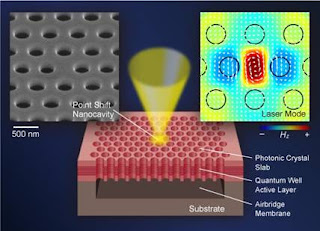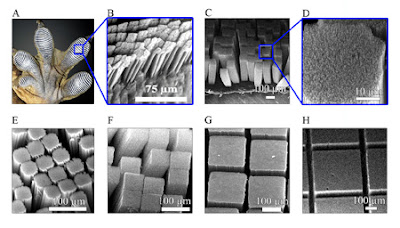 | Forecasting a revolution in science, the 'Ilulissat Statement' concludes an international meeting of renowned researchers at the inaugural Kavli Futures Symposium. High Resolution Image |
That research area is synthetic biology – the construction or redesign of biological systems components that do not naturally exist, by combining the engineering applications and practices of nanoscience with molecular biology.
“The early twenty-first century is a time of tremendous promise and tremendous peril,” includes the statement. “We face daunting problems of climate change, energy, health, and water resources. Synthetic biology offers solutions to these issues: microorganisms that convert plant matter to fuels or that synthesize new drugs or target and destroy rogue cells in the body.”
The two-page statement calls for an international effort to advance synthetic biology that would not only propel research, but do so while developing protective measures against accidents and abuses of synthetic biology.
The statement was issued following the conclusion of the first Kavli Futures Symposium, held June 11-15 in Ilulissat, Greenland. Signed unanimously, signatories include scientists from the California Institute of Technology, Carnegie Institution of Washington, Cornell University, J. Craig Venter Institute, Lawrence Berkeley National Laboratory, the Institute for Advanced Study, Massachusetts Institute of Technology, Princeton University, Stanford University, and University of California at Berkeley (United States); Ecole Normale Superieure (France); Delft University of Technology (The Netherlands); Max Planck Institute of Molecular Cell Biology and Genetics, TU Dresden (Germany); Weizman Institute of Science (Israel); Systems Biology Institute, and Sony Computer Science Laboratories (Japan).
“When we gathered at the Kavli Futures Symposium, researchers – among the best in their fields – in areas such as nanoscience, physics, biology, materials science and engineering met to share their expertise and brainstorm on one of the most promising yet controversial fields facing science today,” said Cees Dekker, professor of molecular biophysics in the Kavli Institute of NanoScience at the Delft University of Technology. “That we not only achieved a consensus, but resolved to issue a unanimous statement on the critical importance of this field is significant.”
The statement also addresses the uncertainties of synthetic biology. “As with any powerful technology, the promise comes with risk. We need to develop protective measures against accidents and abuses of synthetic biology. A system of best practices must be established to foster positive uses of the technology and suppress negative ones. The risks are real; but the potential benefits are truly extraordinary.”
The statement’s recommendations include creation of a professional organization that will engage with the broader society to maximize the benefits, minimize the risks, and oversee the ethics of synthetic life.
“This is a critical moment for synthetic biology,” said Paul McEuen, professor of physics, Cornell University. “The choices facing us now – the scientific investments we make and the rules we set down to govern the field – will impact society for decades to come.”
The symposium was sponsored by The Kavli Foundation and co-hosted and organized by The Kavli Institute at Cornell for Nanoscience and The Kavli Institute of Nanoscience at Delft University of Technology. “This is the first of a series of unique symposia that focus on the trends, challenges and opportunities for future scientific research,” said David Auston, president of the Kavli Foundation. “By emphasizing a forward looking perspective, the Kavli Futures Symposia provide a forum for discussion of the key issues facing future developments and directions in specific fields, and thereby help to define and guide the development of the research in these fields.” Said Fred Kavli, founder of The Kavli Foundation, “I am delighted at the success of this inaugural symposium, which has not only taken a look into the future of science, but provided the first steps toward navigating a successful journey into an exciting and challenging new frontier.” ###
Contact: Blaine Friedlander bpf2@cornell.edu 607-254-8093 Cornell University News Service
Statement Signatories:
International. France: David Bensimon, Ecole Normale Superieure, Germany: Joe Howard, Max Planck Institute of Molecular Cell Biology and Genetics; Petra Schwille, TU Dresden, Israel: Ehud Shapiro, Weizman Institute of Science, Japan: Hiroaki Kitano, Systems Biology Institute, and Sony Computer Science Laboratories, The Netherlands: Cees Dekker, Delft University of Technology
United States: Robert Austin, Princeton University Angela Belcher, Massachusetts Institute of Technology Steven Chu, Lawrence Berkeley National Laboratory Freeman Dyson, Institute for Advanced Study Drew Endy, Massachusetts Institute of Technology Scott Fraser, California Institute of Technology John Glass, J. Craig Venter Institute Robert Hazen, Carnegie Institution of Washington Jay Keasling, University of California at Berkeley Paul McEuen, Cornell University Julie Theriot, Stanford University
For further information about the Ilulissat Statement, or about The Kavli Futures Symposium “The merging of bio and nano: towards cyborg cells” contact: Prof. Cees DekkerKavli Institute of NanoScience, Delft University of Technology, The Netherlands 31-15-278-6094 c.dekker@tudelft.nl, Prof. Paul McEuen The Kavli Institute at Cornell for Nanoscience, Cornell University, USA. 607-255-5193 mceuen@ccmr.cornell.edu
About The Kavli Foundation: Established in 2000, The Kavli Foundation is dedicated to the advancement of science for the benefit of humanity. The Kavli Foundation supports scientific research, honors scientific achievement, and promotes public understanding of scientists and their work through an international program of research institutes, professorships and symposia in the fields of astrophysics, nanoscience and neuroscience. The Foundation also supports the Kavli Prize, which beginning in 2008 will recognize the world’s outstanding leaders in astrophysics, nanoscience and neuroscience.
The Kavli Prize is presented in partnership with the Norwegian Academy of Science and Letters, the Norwegian Ministry of Education and Research and the Norwegian Ministry of Foreign Affairs. Nominations will be reviewed by leading international experts recommended by the U.S. National Academy of Sciences, the Royal Society, the Max Planck Society, the French Academy of Sciences and the Chinese Academy of Sciences. Each Kavli Prize includes an award of one million dollars. More information can be found at kavlifoundation.org and kavliprize.no.
Media Contacts: United States, James Cohen, Director of Communications The Kavli Foundation 805 278-7495 cohen@kavlifoundation.org, Blaine P. Friedlander, Assistant Director Press Relations Office Cornell University 607-254-8093bpf2@cornell.edu
The Netherlands Frank Nuijens, Science Information Officer Delft University of Technology 31–15–278-42-59 mailto:F.W.Nuijens@tudelft.nl
Technorati Tags: Nano or Nanotechnology and Nanotech and Cornell University News Service or synthetic biology and molecular biophysics or Kavli Futures Symposium and Influence of a cancer inhibitor on a single DNA molecule or Frederick Douglass The Meaning of July Fourth for the Negro and Bald Eagle Soars Off Endangered Species List VIDEO



























